Journal of Dental Problems and Solutions
Care under general anesthesia of patients with autistic spectrum
Márcia Alves Pereira dos Santos1, Liz Helena Moraes Pinheiro2, Rafael de Lima Pedro3*, Lívia Azeredo Alves Antunes4 and Laura Guimarães Primo5
2 DDS, MSc, PhD, Department of Pediatric Dentistry, School of Dentistry, Fluminense Federal University, Rua Mário Santos Braga, No. 30-Campus Valonguinho, Centro, Niterói, RJ, CEP 24040-110, Brazil
Cite this as
Cunha Busquet PD, Jesus Portelinha DD, Da Costa ML, Cancio de Paula VDA (2021) Care under general anesthesia of patients with autistic spectrum. J Dent Probl Solut 8(1): 010-014. DOI: 10.17352/2394-8418.000096Introduction: The dental treatment of an autistic patient is the most difficult and the patient's collaboration is often lacking.
Objective: Thus, the objective of this report is to present a clinical case of a non-collaborating autistic patient in which it is the only viable option for carrying out treatment under general anesthesia in a hospital environment.
Case report: Male patient, 24 years old, who was consulted for a dental appointment for the first time to assess the oral cavity. It was observed that there is a need for dental treatment and extractions. The patient was non-verbal, uncooperative and aggressive. Altered behavior control was indicated for general anesthesia for treatment dental care.
Result: All dental treatment was performed with the patient under general anesthesia, including prophylaxis with prophylactic masses, a restoration and two extractions in the upper arch and one extraction in the lower arch.
Conclusion: General anesthesia allows adult autistic patients not to cooperate to be considered effective and with quality.
Introduction
Autism spectrum disorder is defined as a spectrum of developmental disorders that starts early, characterized by impaired motor, social and communication skills, in addition to stereotyped behaviors. Autism does not yet have its etiology fully defined, but it is known that it is multifactorial and is associated with genetic links [1].
The characteristics of autism are noticeable before the age of three, when the child's language is delayed, lack of social interaction, limited and stereotyped patterns. There are atypical behaviors that characterize autism and manifest themselves in different ways and levels. One can find autistic people who speak and others who do not; some may have intellectual disability and others with a high intellectual level; others with no social relationship and others with a good social relationship. A recent survey in the United States found that the prevalence of autism is 1 in every 54 children born. In addition, ASD is 4 times more common in boys than in girls [2].
The cause of autism spectrum disorder is not yet well defined in the literature, but you know the sooner for an intervention the better for the quality of life. Therefore, early diagnosis is an important importance, since a late diagnosis makes any type of approach difficult [3].
For the dental treatment of these patients, caution, patience and understanding of those who are not equal to those who see them are necessary; therefore, it causes the changes caused by sensory and stressful stimuli, to be released and objective and rotating care [4]. But not all of these stimuli are always a guarantee of good dental care, and in the latter case, it is necessary to use general anesthesia [5].
General anesthesia is an anesthetic technique that promotes total unconsciousness and inhibits pain. It is done when the other methods are ineffective for patients who are unable to be treated under normal conditions, where they usually suffer physical or mental changes [6,7]. For these cases it is extremely important to have knowledge of the patient's hospitalization process, what type of procedure and to control the postoperative period, thus enabling surgical intervention by inhalation or intravenous medication, but in dentistry local anesthesia is not dispensed for the case extractions. In this process, it is also important to request surgical risk so that a procedure can be performed with greater safety. The risk includes preoperative physical status before general anesthesia is actually performed [8].
People with autism often have serious health problems, which increases their anesthetic risk [9]. Therefore, the choice of anesthetic is of great importance and responsibility, it must present fast and smooth anesthesia, safely recovering its effects, having a wide safety margin and not having side effects [10].
General anesthesia can be divided into three phases: the induction phase, this first phase is fundamental to all sedation processes, its duration is variable, depending on the anesthetic agents used. The maintenance phase takes place after the beginning of the deep phase, allowing completing the procedures and finally, the recovery phase, where the interventions are finalized until the patient regains his mental state. The most frequently used drugs are isofluorane and sevofluorane, as they offer great safety with little side effect. Isofluorane is the most widely used anesthetic, as it has low toxicity and is poorly metabolized [11].
Having intravenous induction as the most used, with the respiratory function completed with devices called mechanical ventilators, where the lungs are connected to the devices through the nasotracheal or orotracheal tube. General anesthesia is one of the safest, considering that in most cases the patient is discharged on the same day [12].
This paper aims to report the clinical case of a male patient who underwent dental treatment under general anesthesia.
Case report
Male patient, F.G.L. 24 years old, leucoderma, with autism spectrum disorder, presented himself to the dental office with his person in charge to assess his oral health, with no apparent main complaint.
In the anamnesis, it was reported that the patient was non-verbal autistic and it was not possible to make an accurate diagnosis of the patient's dental need, as he is not cooperative and aggressive. In view of the impossibility of treatment in the dental chair, treatment under general anesthesia was indicated. The consent for the proposed treatment was signed by those responsible. To perform the procedure under general anesthesia, laboratory tests (complete blood count, EAS, coagulogram) and surgical risk were requested. General anesthesia occurred with the patient fasting for 8 hours for solids and liquids. At the beginning of the procedure, cleaning with 0.12% chlorhexidine was implemented extra and intraorally. Followed by patient intubation and placement of the oropharyngeal plug (Figures 1,2).
Prophylaxis with a Robson brush and prophylactic paste were performed across the upper and lower arch, supra gingival scraping with a cavitator (Figure 3). The clinical examination of the patient was performed with all the permanent dentition. In the upper arch, there were carious lesions on the upper right first molar (16) and on the upper left third molar (28). Still in the upper arch, the upper left canine (23) was in an ectopic position. In the lower arch, the lower left third molar was semi-included (38). After adequacy of the oral environment, the restoration was performed with composite resin 3M in the A4 color palate and a drill with a spherical diamond tip KG in the first right upper molar (16) (Figures 4,5). Still in the upper arch, extractions were performed on the left upper third molar, using the 18L quinelate forceps (Figures 6-8) and the left upper canine with the straight quinelate lever (Figure 6). In the lower arch, extraction of the right lower third molar, semi-enclosed, was performed with quinelate forceps 17 (Figures 6-8). The extractions were sutured with a resorbable violet Vicryl 3.0 thread (Atramat®). There were no complications during the surgery. And the orofaging plug was removed at the end of the surgery.
The patient was then referred to the RPA and then to the room. He was under the care of the nursing staff until the end of the day and was discharged at 16:00 on the same day.
Discussion
Autism was described by Kanner in cases where there were similar characteristics to reporting the same fact of the lack of communication and difficulty in forming emotional contact in groups of children with intelligence below normal. The word autism was used for the first time to define the loss of contact with what is real, what causes great difficulty or even the impossibility of communication [13,14].
Autism is a highly complex developmental disorder, defined by multiple etiologies, different degrees of behavior and degrees of severity. Characterized by severe specific delays, motor and cognitive dysfunctions. It is considered one of the most serious neuropsychiatric disorders, where it is more prevalent in boys, but when in girls it tends to be more compromised [9].
Behavioral manifestations that define the characteristics of autism include its difficulty in social interaction, repetitive and stereotyped behavior patterns, poor communication and little interest in activities, when this interest is always for the same thing. Stereotyped patterns include resistance to change, clapping repeatedly, and gait and tend to repeat words. Communication difficulties happen to different degrees, many have good verbal skills and others are non-verbal, others have immature language characterized by echolalia [15].
The diagnosis has several reinforcements, in which most assess communication, social interaction, repetitive behavior patterns and disinterest in conventional activities. However, there is still a need for greater diagnostic criteria with more precision so that there is an increasingly early and individualized intervention and diagnosis for each case. Treatment consists of skill establishments with instant functionality, including social skills among other skills for greater social interactions [16]. A limitation of this work is the risk inherent to general anesthesia. The risks of this technique (risk of the patient's life) were weighed, however this was the only possible way for this assistance.
The patient in this non-verbal and aggressive autistic case report went to the dental office for the first time, but because he has no social interaction, is non-verbal and is an adult with great physical and aggressive strength, it was concluded that treatment would be unfeasible dental chair. For the feasibility of patient / dentist care, treatment under general anesthesia was mandatory [17].
General anesthesia in patients with special needs is of great importance when in some cases it is not possible to carry out the treatment in the dental chair, since most of them have conditions that make them impossible, but there are contraindications [17]. Routinely undergoing treatment under general anesthesia, the patient cannot have a weakened immune system, presenting with a cold, fever, asthmatic crisis or heart failure [12].
People with special needs, such as those with autism, can present serious health problems, with this, there is a greater anesthetic risk, and therefore the anesthesiologist is responsible for adjusting the chemical containment dose. The anesthetic must have fast and smooth action; have good safety and good recovery after anesthetic effect. Before administering the sedative, the best therapeutic option must be chosen, where it can perform actions and start quickly, drugs of short duration to avoid prolonged analgesia, duration of the predictable action being monitored for a certain period, moderate cardiovascular effects, the effects and the duration cannot be altered by the disease carried by the patient. Previous laboratory tests are also required to assess the patient before general anesthesia [18].
The most used drugs are isufluorane and sevofluorane, which offer greater safety with few side effects, have low toxicity and are poorly metabolized. During the operative process, vital signs are monitored by equipment that shows your temperature, blood pressure, shows your electrocardiography and your O2 saturation. Capnography assessment, analysis of inhaled anesthetic gases, analysis of inhaled anesthetic gases and assessment of nasotracheal pressure are required. The average duration of dental treatment under general anesthesia lasts around six hours, with the final two hours for patient recovery. In the vast majority of cases, the patient is discharged on the same day after the procedure if there are good oral and systemic health conditions [19].
Dental treatment performed under general anesthesia is not a viable and routine option. However, in this case, it was possible to show that treatments can be performed in the operating room safely for the team and for the patient. These treatment options must be disseminated in order to bring this possibility to the patient and the professionals to understand how it works so that it is more and more widespread [20].
Conclusion
Adult patients with ASD should receive different treatment, prioritizing the prevention of oral diseases and emphasizing the guidelines regarding diet and oral hygiene. For some more aggressive patients such as the one in the reported clinical case, outpatient care is not feasible, thus, the restoration of oral health occurred through general anesthesia. It is essential to monitor patients with ASD to maintain oral health.
The contribution of each author
All authors contributed extensively to the work presented in this paper. Viviane Andrade Cancio de Paula - conceived the brainbow strategies, designed, and wrote the paper. Paola da Cunha Busquet and Desirée de Jesus Portelinha- wrote the paper. Monica Lage da Costa - designed and wrote the paper.
- Gadia C, Tuchman R, Rotta N (2004) Autismo e doenças invasivas de desenvolvimento. J Pediatr 80: 83-94. Link: http://bit.ly/3bZUqsE
- Maenner M, Shaw K, Baio J, Washington A, Patrick M, et al. (2020) Prevalence of Autism Spectrum Disorder Among Children Aged 8 Years- Autism and Developmental Disabilities Monitoring Network, 11 Sites, United States, 2016. MMWR Surveill Summ 69: 1-12. Link: http://bit.ly/3kLDJFb
- Lord C, Elsabbagh M, Baird G, Veenstra-Vanderweele J (2018) Autism spectrum disorder. Lancet 392: 508-520. Link: http://bit.ly/3sPowpp
- Chandrashekhar S, Bommangoudar JS (2018) Management of Autistic Patients in Dental Office: A Clinical Update. Int J Clin Pediatr Dent 11: 219-227. Link: http://bit.ly/30kVEsJ
- Jo CW, Park CH, Lee HL, Kim JH (2017) Managing the behavior of a patient with autism by sedation via submucosal route during dental treatment. J Dent Anesth Pain Med 17: 157-161. Link: http://bit.ly/3c0ALZv
- Lim M, Borromeo G (2017) The use of general anesthesia to facilitate dental treatment in adult patients with special needs. J Dent Anesth Pain Med 17: 91-103. Link: http://bit.ly/3bj3euA
- Castro A, Marchesoti M, Oliveira F, Novaes M (2010) Analysis of dental treatment provided under general anesthesia in patients with special needs. Rev Odontol UNESP 39: 137-142. Link: http://bit.ly/3uWpxOs
- Sakae T, de Oliveira Neto P, Sakae G (2016) Efeitos da anestesia geral na cognição do idoso. ACM arq catarin Med 45: 107-116. Link: http://bit.ly/3qclA4w
- Borges M, Shinohara H (2007) Síndrome de Asperger em paciente adulto: Um estudo de caso. Rev bras ter cogn 3: 41-48. Link: http://bit.ly/2OjHEwN
- Silva C, Lavado C, Areias C, Mourão J, Andrade D (2015) Conscious sedation vs general anesthesia in pediatric dentistry–a review. MedicalExpress 2. Link: http://bit.ly/3qihkk6
- Australian Society of Anaesthetic. Australian Society of Anaesthetic: During you Anaesthetic. 2020. Home Page. Link: http://bit.ly/3qk0hxO
- de Andrade A, Eleutério A (2016) Pacientes portadores de necessidades especiais: abordagem odontológica e anestesia geral. Rev Bras Odontol 72: 66. Link: http://bit.ly/2NWG8ky
- Tantam D (1988) Asperger's syndrome. J Child Psychol Psychiatry 29: 245-255. Link: http://bit.ly/2OpIRmp
- Ferreira P, Teixeira E, Britto D (2011) Relato de caso: descrição da evolução da comunicação alternativa na pragmática do adulto portador de autismo. Rev Cefac 13: 559-567. Link: http://bit.ly/2PEG8pT
- Wing L (1991) The relationship between Asperger’s syndrome and Kanner’s autism. In U. Frith (Ed.), Autism and Asperger syndrome. Londres: Cambridge University Press 93-12. Link: https://bit.ly/38bW1ds
- Faras H, Al Ateeqi N, Tidmarsh L (2010) Autism spectrum disorders. Ann Saudi Med 30: 295‐300. Link: http://bit.ly/3bhOlsf
- Castro A, Marchesoti M, Oliveira F, Novaes M (2010) Avaliação do tratamento odontológico de pacientes com necessidades especiais sob anestesia geral. Rev Odontol UNESP 39: 137-142. Link: https://bit.ly/388eKGY
- Muthu MS, Prathibha KM (2008) Management of a child with autism and severe bruxism: a case report. J Indian Soc Pedod Prev Den 26: 82. Link: http://bit.ly/2O1nEiA
- Summors A, Gupta A, Matta B (1999) Dynamic cerebral autoregulation during sevoflurane anesthesia: a comparison with isoflurane. Anesth Analg 88: 341-345. Link: http://bit.ly/3bhZREb
- Silva C, Lavado C, Areias C, Mourão J, Andrade D (2015) Conscious sedation vs general anesthesia in pediatric dentistry–a review. Medical Express 2. Link: https://bit.ly/3qihkk6
Article Alerts
Subscribe to our articles alerts and stay tuned.
 This work is licensed under a Creative Commons Attribution 4.0 International License.
This work is licensed under a Creative Commons Attribution 4.0 International License.
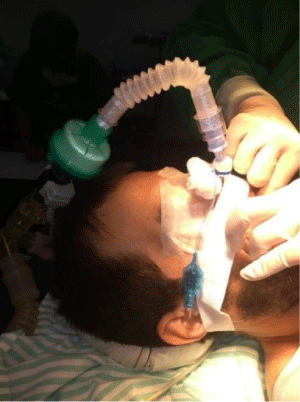
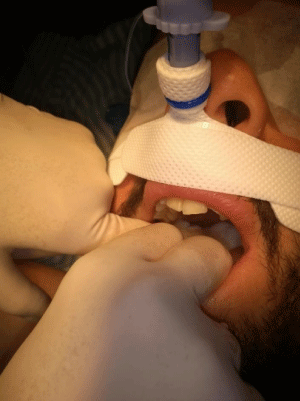
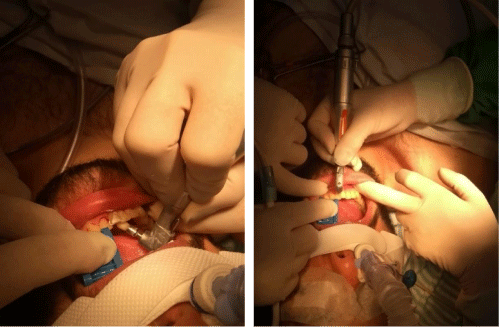
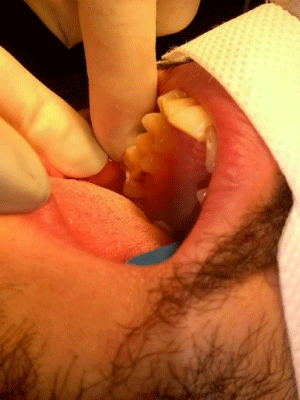
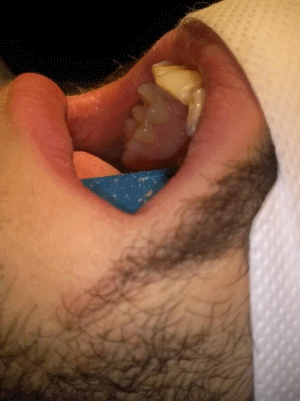
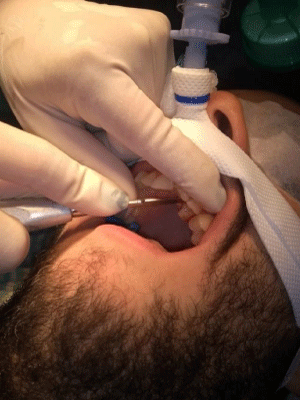
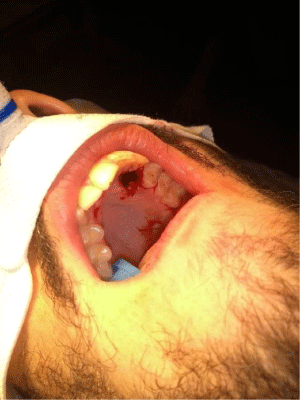
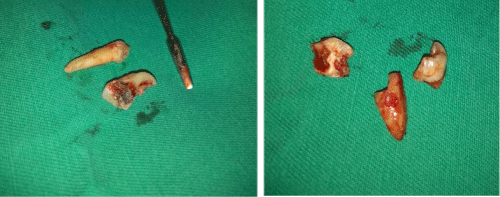

 Save to Mendeley
Save to Mendeley
